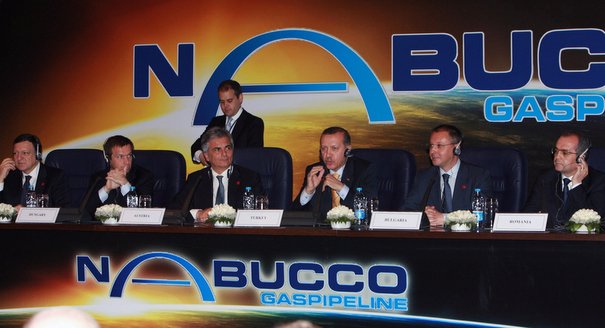When the European Union really puts it mind to something, it can sometimes deliver.
It did it with the introduction of the internal market. It did it with the introduction of the euro. It did it with enlargement by expanding the bloc to Eastern and Central Europe.
Isn’t it surprising then, that the EU has not been able to get its act together to build the Nabucco gas pipeline?
The idea behind Nabucco, conceived ten years ago, was to reduce the bloc’s dependence on Russian gas by finding alternative sources of energy.
The plan was that the 3,900km-long pipeline would stretch from Turkey, snake up through Bulgarian, Romania, Hungary and end in Austria.
After a decade of delays and a price tag expected to be far higher than the originally estimated €8 billion, Nabucco is a white elephant.
The reason is simple. Nabucco has no producers to fill the pipeline. Therefore banks and investors are not prepared to lend or take stakes. They need to know how much gas will flow into the pipeline, the commercial transit and tariff terms and who will buy it.
“We are still waiting for Azerbaijan to decide to whom it will sell its gas,” Christian Dolezal, spokesman for the Nabucco consortium said in an interview.
Nabucco has been waiting several years for Azerbaijan to make up its mind.
Socar, the state-owned Azeri energy company is developing the huge Shah Deniz fields with Britain’s BP and Norway’s Statoil. In the meantime, three planned pipelines are competing for the 10 billion cubic meters of gas that will soon be available.
One is Nabucco. The other is the Trans Adriatic Pipeline (TAP) and the third is BP which last October proposed building its own South East Europe Pipeline (SEEP). That would make Nabucco redundant.
Nabucco had one clear advantage. It was to bring Azeri gas directly into Central Europe, giving Azerbaijan the access it always coveted. The disadvantage is that Nabucco was supposed to have a capacity of 30 billion cubic meters. With only 10 billion cubic meters of gas from Azerbaijan it might not be a viable project.
TAP has an advantage. Its capacity is 10 billion cubic meters, a perfect fit for Azerbaijan. Its disadvantage is that its market is South-Eastern Europe, not the lucrative markets of Western Europe.
And then, there is BP. Its proposed SEEP pipeline also has a capacity of 10 billion cubic meters. As a shareholder in Shah Deniz, BP has a clear advantage.
As Azerbaijan continues to play off the competitors against each other, Nabucco should call it a day.
It’s not just because it has no suppliers lined up. The energy landscape in Europe and the United States has fundamentally changed since Nabucco was first proposed.
Europe now has access to Liquefied Natural Gas (LNG). It is transported by ship from Qatar, for example, and is expensive. But as more LNG arrives at the markets in Europe, competition will become greater.
The United States is importing less Saudi oil because of the expansion of shale, or non-conventional gas. It now accounts for 25 percent of total U.S. production according to the U.S. Energy Information Administration.
The United States could soon be exporting gas to Europe.
Shale gas will eventually play a role in Europe too. Poland and Ukraine are pressing ahead with shale exploration, determined to diversify their energy sources and so lessen their dependence on Russia.
Then there are renewables, wind and solar energy.
They got a big boost after Angela Merkel, the German chancellor, decided last year to close all of Germany’s 17 nuclear power plants by 2022.
The consequences of that decision are still being felt. Switzerland, Austria, Belgium and Italy are abandoning nuclear energy. Even in France, where nuclear power provides over 75 percent of the country’s energy needs, the German decision has awakened a debate.
Some analysts say that waiting for shale and renewables to become big energy players means that Europe will become more, not less dependent on gas, and Russian gas at that because of its proximity.
But the availability of other sources of energy no longer makes that certain.
Furthermore, the gradual decoupling of the oil and gas price, as gas becomes widely available through other means, makes it a buyer’s market.
Russia knows that. It is worried about the future role that shale and LNG will play in Europe. This explains why Russia’s giant state-owned energy monopoly, Gazprom, has been willing to renegotiate its long-term contracts with some of its major European partners.
The bottom line is that it is time for the EU to ditch Nabucco. Many member states never supported it anyway. The political support at the top was erratic and minimal.
Europe will not lose out. Nabucco would not have enhanced Europe’s energy security, given the options now open to distributors. It would have little strategic value because energy needs and supplies have shifted over the past decade. Summing up: It would be a waste of public and private money.






.jpg)